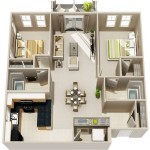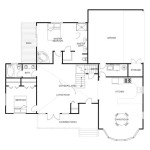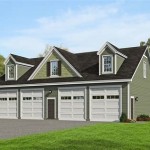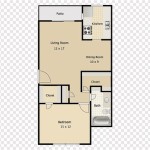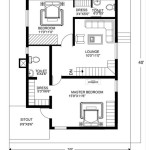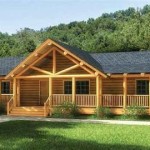3 Bedroom House Floor Plans: The Simplicity and Functionality of 1-Story Living
The allure of a single-story home, particularly a 3-bedroom layout, stems from its inherent accessibility and practicality. It eliminates the inconvenience of stairs, making it an ideal choice for families with young children, individuals with mobility limitations, and those simply seeking a simplified lifestyle. A well-designed 3-bedroom, 1-story floor plan can maximize space, promote seamless flow, and create a comfortable and functional living environment. This article explores the key considerations and potential advantages of adopting this popular housing style.
The popularity of 3-bedroom, 1-story homes is driven by several factors. The size is often considered the "sweet spot" for many families, providing adequate space for parents and children without being overly large and difficult to maintain. The single-story design lends itself to easy navigation and accessibility, making it a desirable option for aging in place. Furthermore, the reduced cost of construction compared to multi-story homes makes this floor plan an economically attractive proposition for many prospective homeowners.
Effective design of a 3-bedroom, 1-story house plan involves a careful balancing act between maximizing living space, optimizing traffic flow, and ensuring privacy for each member of the household. The orientation of the house on the lot, the placement of windows and doors, and the use of interior design elements all play a crucial role in creating a comfortable and functional home.
Key Considerations in 3-Bedroom, 1-Story Floor Plan Design
Several key considerations need thoughtful attention when designing or selecting a 3-bedroom, 1-story floor plan. These considerations impact not only the aesthetic appeal but also the long-term livability and functionality of the home. Careful planning at the outset can prevent costly and inconvenient alterations later on.
Firstly, the allocation of space between living areas and bedrooms is paramount. A common approach is to designate one side of the house for the bedrooms and bathrooms, creating a private retreat, while the opposite side is dedicated to the living room, dining area, and kitchen, fostering a more social and interactive environment. The relative size of these zones must be carefully considered based on the lifestyle and preferences of the occupants. For instance, families who frequently entertain might prioritize a larger living and dining area, while those who value personal space might prefer larger bedrooms or a dedicated home office.
Secondly, the placement of the kitchen is critical for both functionality and social interaction. Open-concept designs, where the kitchen flows seamlessly into the living and dining areas, are increasingly popular as they promote a sense of connection and allow the cook to remain engaged with family and guests. However, it is important to consider noise levels and potential cooking odors when opting for an open-concept kitchen. Alternatively, a partially enclosed kitchen can offer a balance between openness and separation, providing a degree of privacy while still allowing for easy interaction.
Thirdly, the location and size of bathrooms must be carefully planned. A common arrangement is to have a master bathroom connected to the master bedroom and a shared bathroom accessible from the other bedrooms and living areas. The inclusion of a powder room near the living area can also be a convenient addition for guests. The size of the bathrooms should be adequate to allow for comfortable use, with sufficient space for storage and movement. Consideration should also be given to accessibility features, such as grab bars and wider doorways, particularly if the home is intended for aging in place.
Advantages of Single-Story Living
The decision to opt for a single-story home, especially a 3-bedroom configuration, comes with a set of distinct advantages that cater to a variety of lifestyles and needs. These benefits extend beyond mere convenience and encompass aspects of safety, cost-effectiveness, and aesthetic appeal.
One significant advantage is the enhanced accessibility and safety offered by the absence of stairs. This is particularly beneficial for young children, elderly individuals, and those with mobility limitations. Eliminating stairs reduces the risk of falls and makes it easier to navigate the home. In case of emergencies, such as fires, a single-story home provides easier and faster escape routes. Furthermore, moving furniture and other heavy items is significantly easier in a single-story home, reducing the risk of injury.
Another advantage is the potential for lower construction costs. Building a single-story home typically requires less foundation work, simpler framing, and reduced material costs compared to a multi-story home of the same square footage. The single-level design also simplifies the installation of utilities, such as plumbing and electrical wiring. This can translate into significant savings during the construction phase. Furthermore, maintenance costs tend to be lower for single-story homes, as exterior repairs, such as roof repairs, are generally easier and less expensive to perform.
Single-story homes often lend themselves to a greater connection with the outdoors. The layout allows for easy access to the yard and garden, promoting a sense of connection with nature. Patios, decks, and outdoor living spaces can be seamlessly integrated into the design, creating a cohesive indoor-outdoor living experience. Large windows and sliding glass doors can be strategically placed to maximize natural light and ventilation, further enhancing the connection with the surrounding environment.
Maximizing Space in a 3-Bedroom, 1-Story House Plan
Effective space utilization is crucial in a 3-bedroom, 1-story home to avoid a cramped or cluttered feel. Strategic design choices can significantly enhance the perceived and actual usable space within the dwelling. These strategies involve careful consideration of layout, storage solutions, and architectural details.
One effective strategy is to incorporate open-concept living areas. By eliminating or minimizing walls between the living room, dining area, and kitchen, a sense of spaciousness is created. This allows for a more fluid flow of movement and enhances natural light penetration throughout the home. The use of strategically placed furniture and rugs can help define different zones within the open space without resorting to physical barriers.
Another key element is the incorporation of ample storage solutions. Built-in shelving, closets, and cabinets can provide valuable storage space without encroaching excessively on the floor area. Maximizing vertical space by using tall cabinets and shelves can also help to declutter the living areas. In bedrooms, consider incorporating walk-in closets or built-in wardrobes to optimize storage and minimize the need for bulky furniture.
The judicious use of architectural details can also contribute to maximizing perceived space. High ceilings can create a sense of airiness and grandeur. Large windows and skylights can bring in natural light, making the interior feel brighter and more open. Mirrors can be strategically placed to reflect light and create the illusion of greater space. Light color palettes can also enhance the sense of spaciousness, while darker colors can make a room feel smaller and more enclosed. The use of recessed lighting can also help to minimize visual clutter and create a cleaner, more streamlined appearance.
Finally, consider the use of multi-functional furniture. Sofa beds, folding tables, and storage ottomans can provide flexible solutions for maximizing space in smaller homes. These items can serve multiple purposes, allowing for greater versatility and adaptability in the living environment.
The successful implementation of a 3-bedroom, 1-story floor plan hinges on a clear understanding of individual needs and preferences, coupled with a thoughtful and strategic design approach. By carefully considering the factors outlined above, prospective homeowners can create a comfortable, functional, and aesthetically pleasing living space that meets their unique requirements.

Simple One Story 3 Bedroom House Plans Modular Home Floor 1200 Sq Ft

3 Bedroom House Plans With Open Floor Plan Remarkable One Story Single Level Garage Farmhouse

Single Y 3 Bedroom House Plan Pinoy Eplans Bungalow Floor Plans One

One Story Mediterranean House Plan With 3 Ensuite Bedrooms 66389jmd Architectural Designs Plans

1 Story 3 Bedroom House Plans Floor

Single Story 3 Bedroom The Jacksonboro Home Floor Plan

House Plan 87405 Quality Plans From Ahmann Design

Must Have One Story Open Floor Plans Blog Eplans Com

House Plan Gallery Hpg 1416c 1 416 Sq Ft 3 Bedroom 2 Bath Small Plans Single Story Printed Blueprints Simple To Build 5 Sets Com

Lake Floor Plan 3 Bedrms 2 5 Baths 2048 Sq Ft 123 1005

